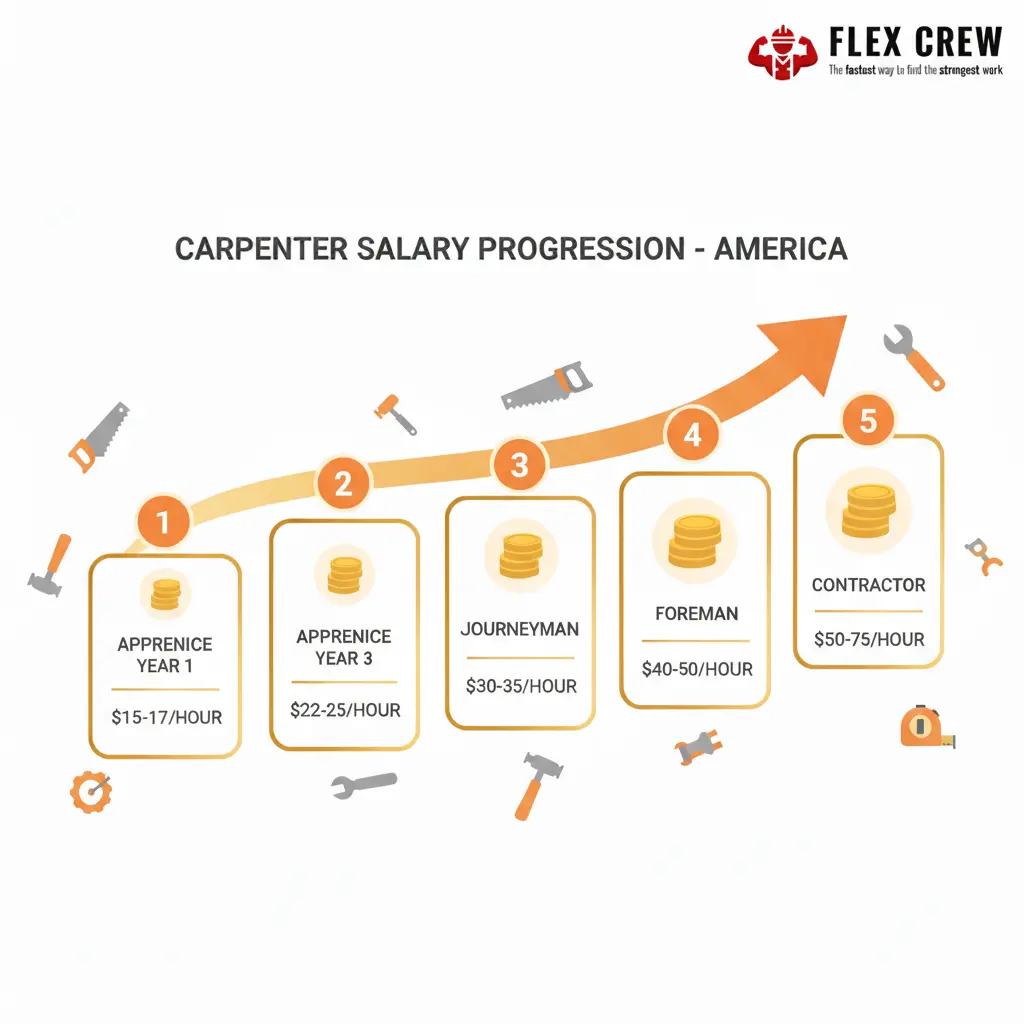Estimating construction costs accurately involves three essential steps: reviewing project plans and specifications thoroughly, conducting detailed quantity takeoffs to measure materials and labor needs, and calculating total expenses including direct costs (materials, labor, equipment) plus indirect costs (permits, insurance, overhead). Most successful contractors use a combination of unit pricing methods, historical project data, and modern estimating software to achieve accuracy rates within 10-15% of final costs. This systematic approach prevents budget overruns, ensures competitive bidding, and maintains healthy profit margins throughout the construction process.
Whether you're a seasoned contractor or new to the construction industry, accurate cost estimation serves as the foundation for every successful project. Poor estimates can destroy profit margins, damage your reputation, or cause you to lose competitive bids.
Understanding Construction Cost Estimation Fundamentals
Construction costestimation is the process of calculating all required expenses to complete a building project successfully. This complex procedure involves far more than simply adding material costs together.
Professional estimators must account for direct costs like materials, labor, and equipment, plus indirect expenses such as permits, insurance, utilities, and administrative overhead. The goal is creating a comprehensive financial blueprint that guides decision-making from initial planning through project completion.
Key Components of Every Estimate:
Material quantities and current market pricing
Labor hours required for each trade
Equipment rental and operational costs
Subcontractor bids and markup
Overhead expenses and profit margins
Contingency allowances for unexpected issues
Understanding these fundamentals helps contractors create estimates that protect profitability while remaining competitive in the bidding process.

Types of Construction Cost Estimates
Different project phases require specific types of estimates, each varying in detail and accuracy based on available information.
Preliminary Estimates (Conceptual Phase)
Created during early project planning when limited details are available. These rough calculations provide initial feasibility assessments and budget ranges, typically accurate within 25-50% of final costs. Contractors use square footage rates, historical project data, and basic specifications to generate these estimates quickly.
Detailed Estimates (Design Phase)
Developed when construction drawings and specifications are complete or nearly finished. These comprehensive estimates break down every component by trade and material type, achieving accuracy within 10-15% of actual costs. Detailed estimates form the basis for competitive bidding and contract negotiations.
Quantity Takeoff Estimates
Focus specifically on measuring and calculating exact material quantities from construction plans. Estimators systematically count, measure, and quantify everything from concrete yards to electrical outlets, creating precise shopping lists for the entire project.
Bid Estimates
The final estimate submitted to project owners during the competitive bidding process. These incorporate all previous estimate types plus final subcontractor quotes, current market pricing, and strategic markup for overhead and profit.
Each estimate type serves specific purposes in the construction timeline, with accuracy improving as more project details become available.
The Step-by-Step Estimation Process
Successful construction cost estimation follows a systematic approach that ensures nothing gets overlooked and accuracy remains consistently high.
Step 1: Project Review and Scope Definition
Begin by thoroughly studying all project documents including architectural plans, engineering drawings, specifications, and contract requirements. Understanding every detail prevents costly oversights later in the process.
Essential Documents to Review:
Architectural drawings and floor plans
Structural, mechanical, and electrical plans
Project specifications and material requirements
Site conditions and access limitations
Building codes and permit requirements
Contract terms and special conditions
Step 2: Quantity Takeoff and Material Calculations
Measure and count every component required for the project using systematic methods that prevent double-counting or missed items.
Proven Takeoff Techniques:
Start from one corner of plans and work methodically
Use consistent units of measurement throughout
Round up quantities to account for waste and breakage
Double-check calculations using different methods
Account for material delivery and storage requirements
Step 3: Labor Cost Estimation
Calculate workforce requirements based on project scope, local wage rates, and productivity factors specific to your crew's experience level.
Labor Cost Factors:
Base hourly wages for each trade
Payroll taxes and workers' compensation
Benefits and overtime premiums
Productivity rates based on project complexity
Weather delays and seasonal adjustments
Supervision and project management time
Step 4: Equipment and Subcontractor Costs
Determine equipment rental needs and gather current subcontractor quotes for specialized work beyond your company's capabilities.
Equipment considerations include delivery charges, fuel costs, operator wages, and maintenance expenses. For subcontractor work, obtain multiple quotes and verify their scope includes all necessary materials and labor.
Step 5: Overhead and Indirect Cost Allocation
Add company overhead expenses, insurance costs, permits, and administrative time to ensure all business expenses are recovered through project pricing.
Common Overhead Items:
Office rent and utilities
Administrative salaries
Insurance premiums
Vehicles and equipment depreciation
Professional licenses and certifications
Marketing and business development costs
Step 6: Profit Margin and Contingency Planning
Apply appropriate profit margins based on project risk level, market conditions, and your company's financial goals. Include contingency allowances for unforeseen circumstances that commonly occur during construction.
Typical profit margins range from 10-20% depending on project complexity, competition level, and relationship with the client. Contingencies usually fall between 5-15% of total project costs.
Advanced Estimating Methods and Techniques
Professional estimators use multiple methods to cross-check their calculations and improve accuracy across different project types.
Unit Cost Method
This approach calculates costs based on standard units of measurement like square feet, linear feet, or cubic yards. Experienced contractors develop unit cost databases from completed projects, adjusting for local conditions and current market prices.
Example Unit Costs:
Concrete foundation: $12-18 per square foot
Framing: $8-15 per square foot
Roofing: $5-12 per square foot
Electrical rough-in: $3-8 per square foot
Assembly Method
Breaks projects into major components or systems, calculating costs for each assembly separately. This method works well for repetitive elements like bathroom assemblies, kitchen installations, or mechanical systems.
Parametric Estimating
Uses statistical models and historical data to predict costs based on specific project characteristics. This advanced technique works best for projects with well-defined parameters and extensive historical databases.
Analogous Estimating
Compares new projects to similar completed work, adjusting for differences in size, complexity, location, and timing. This method provides quick estimates but requires careful adjustment for project-specific factors.
Smart contractors combine multiple methods to validate their estimates and identify potential errors before submitting bids.
Essential Tools and Software for Modern Estimating
Technology has revolutionized construction estimating, making the process faster and more accurate while reducing human error.
Digital Takeoff Software
Modern takeoff programs allow estimators to measure quantities directly from digital plans, automatically calculating areas, lengths, and counts with precision that manual methods cannot match.
Popular Takeoff Solutions:
Bluebeam Revu for PDF markup and measurement
PlanSwift for quantity takeoff automation
STACK for cloud-based collaborative estimating
Togal.AI for artificial intelligence-powered takeoffs
Comprehensive Estimating Platforms
Full-featured estimating software combines takeoff capabilities with cost databases, labor productivity rates, and bid management tools.
These platforms streamline the entire estimation process from initial takeoff through final bid submission, maintaining consistency across all company estimates.
Cost Database Access
Professional estimators rely on current pricing data from sources like RSMeans, local supplier quotes, and industry pricing services to ensure their unit costs reflect real market conditions.
Regular database updates help contractors stay competitive while maintaining profitability in fluctuating material markets.
Common Estimation Mistakes and How to Avoid Them
Even experienced contractors make estimation errors that can devastate project profitability. Learning from common mistakes helps improve accuracy and business success.
Incomplete Scope Understanding
The Problem: Missing work items or misunderstanding project requirements leads to significant cost shortfalls.
The Solution: Invest adequate time in project review, ask clarifying questions, and visit job sites before estimating whenever possible.

Outdated Pricing Information
The Problem: Using old material prices or labor rates results in estimates that don't reflect current market conditions.
The Solution: Update pricing databases regularly, maintain relationships with suppliers, and verify current rates for each estimate.
Inadequate Overhead Allocation
The Problem: Failing to include all business expenses in project pricing slowly erodes profitability over time.
The Solution: Calculate true overhead costs annually and apply appropriate percentages to all projects based on actual business expenses.
Unrealistic Labor Productivity
The Problem: Assuming ideal productivity rates without considering project-specific challenges, weather impacts, or crew experience levels.
The Solution: Adjust productivity factors based on actual project conditions, historical performance data, and honest assessment of crew capabilities.
Insufficient Contingency Planning
The Problem: Not allowing for unexpected costs that commonly occur during construction projects.
The Solution: Include appropriate contingency percentages based on project complexity, contract terms, and historical experience with similar work.
Poor Documentation and Organization
The Problem: Disorganized estimating processes lead to missed items, duplicate entries, and calculation errors.
The Solution: Develop standardized estimating procedures, use checklists, and maintain detailed documentation for all calculations and assumptions.
Market Factors Affecting Construction Costs in 2025
Current market conditions significantly impact construction cost estimation, requiring contractors to stay informed about industry trends and economic factors.
Material Price Volatility
Construction material costs have stabilized somewhat after years of dramatic fluctuations, but regional variations and supply chain disruptions continue affecting pricing. Smart estimators monitor commodity markets and maintain relationships with multiple suppliers to ensure competitive pricing.
Key Material Trends:
Lumber prices remain sensitive to housing demand and trade policies
Steel costs fluctuate with global supply and tariff changes
Concrete pricing varies significantly by region and transportation costs
Electrical materials face ongoing supply chain challenges
Labor Market Conditions
Skilled construction labor remains in high demand across most markets, driving wage increases and affecting project scheduling. Contractors must factor current labor availability and wage trends into their estimates.
The construction industry continues facing worker shortages in key trades like electrical, plumbing, and HVAC, creating upward pressure on subcontractor pricing.
Regulatory Changes
Building codes, environmental regulations, and permit requirements continue evolving, potentially adding costs to construction projects. Staying current with regulatory changes helps ensure estimates include all required compliance costs.
Regional Considerations for Accurate Estimating
Construction costs vary significantly based on geographic location, requiring local market knowledge for accurate estimation.
Local Labor Rates
Wage rates differ dramatically between metropolitan and rural areas, union and non-union markets, and regions with varying costs of living. Successful contractors maintain current wage data for their specific markets.
Material Transportation Costs
Distance from suppliers, available transportation options, and regional demand all affect material pricing. Remote job sites may require significant markups for delivery and logistics costs.
Climate and Seasonal Factors
Weather conditions impact both construction methods and seasonal pricing fluctuations. Cold climate construction requires different techniques and materials compared to warm weather regions.
Permitting and Inspection Requirements
Local jurisdictions have varying permit fees, inspection requirements, and approval timeframes that must be factored into project costs and schedules.
Building Strong Supplier and Subcontractor Relationships
Successful construction estimating depends heavily on reliable pricing information from suppliers and subcontractors who understand your business needs.
Supplier Partnership Benefits
Developing strong relationships with material suppliers provides access to current pricing, early notification of price changes, and preferred customer treatment during supply shortages.
Regular communication with suppliers helps contractors anticipate market changes and adjust their estimates accordingly.
Subcontractor Network Development
Maintaining relationships with reliable subcontractors ensures access to competitive pricing and skilled craftsmen when needed for project execution.
Subcontractor Selection Criteria:
Competitive and accurate pricing
Proven track record of quality work
Reliable scheduling and communication
Proper licensing and insurance coverage
Financial stability and bonding capacity
Technology Integration for Improved Accuracy
Modern construction companies leverage technology throughout the estimating process to improve accuracy, reduce errors, and increase efficiency.
Cloud-Based Collaboration
Cloud estimating platforms allow team members to collaborate in real-time, ensuring everyone works with current information and reducing version control issues.
Mobile Integration
Smartphone and tablet applications enable field personnel to capture site conditions, take measurements, and update estimates directly from job sites.
Artificial Intelligence Applications
AI-powered estimating tools can analyze historical data, identify patterns, and suggest adjustments to improve estimate accuracy over time.
Integration with Project Management
Connecting estimating software with project management platforms provides seamless data flow from initial estimates through project completion, enabling continuous improvement of future estimates.
Quality Control and Estimate Review Processes
Implementing systematic review processes helps identify errors before they become costly mistakes during project execution.
Multi-Level Review Systems
Having multiple team members review estimates independently helps catch calculation errors, missed items, and unrealistic assumptions before bid submission.
Checklist Implementation
Standardized checklists ensure consistent estimating procedures and help prevent oversight of common cost items.
Historical Data Comparison
Comparing new estimates to similar completed projects helps validate assumptions and identify potential discrepancies requiring further investigation.
Client and Market Feedback
Tracking bid success rates and gathering feedback from clients and competitors provides valuable insights for improving future estimates.
Frequently Asked Questions
What percentage should I add for contingency in my construction estimates?
Contingency percentages typically range from 5-15% of total project costs, depending on project complexity, contract terms, and your experience level. Simple renovations might require only 5-8% contingency, while complex new construction could need 12-15% to account for unforeseen conditions.
How accurate should my construction estimates be?
Professional estimates should be accurate within 10-15% of final project costs when based on complete plans and specifications. Preliminary estimates during early project phases may have wider accuracy ranges of 20-30%, but detailed estimates used for bidding should achieve much tighter accuracy.
What's the difference between direct and indirect construction costs?
Direct costs include materials, labor, and equipment directly used in physical construction work. Indirect costs encompass overhead expenses like permits, insurance, administrative time, utilities, and business operating expenses that support project execution but aren't directly billable construction activities.
How do I estimate labor costs accurately for construction projects?
Calculate labor costs by determining required work hours for each trade, multiplying by current wage rates, then adding payroll taxes, benefits, and workers' compensation costs. Factor in productivity rates based on project complexity, weather conditions, and crew experience levels.
Should I use estimating software or manual methods for construction estimates?
Modern estimating software provides significant advantages in accuracy, speed, and organization compared to manual methods. Software reduces calculation errors, maintains consistent formatting, and enables easy updates when project conditions change. However, software still requires skilled estimators who understand construction processes and can validate results.
How often should I update my construction cost databases?
Update material pricing databases at least quarterly, with more frequent updates during periods of high price volatility. Labor rates should be reviewed annually or whenever wage agreements change. Local market conditions may require more frequent updates to maintain competitive accuracy.
What information do I need before starting a construction estimate?
Essential information includes complete architectural and engineering drawings, detailed specifications, site conditions assessment, local permit requirements, and current subcontractor availability. Missing any of these elements can lead to significant estimation errors.
How do I handle change orders and estimate revisions during construction?
Establish clear change order procedures in your contracts, including pricing methods and approval processes. Use the same systematic estimating approach for changes as original work, documenting all assumptions and obtaining client approval before proceeding with additional work.
What's the biggest mistake contractors make when estimating construction costs?
The most common mistake is inadequate project review and scope understanding, leading to missed work items or underestimated complexity. Rushing through the estimating process to submit more bids often results in costly errors that destroy project profitability.
How do I price construction work competitively while maintaining profit margins?
Focus on accurate cost calculation rather than arbitrary price cutting. Improve efficiency through better planning, skilled workforce development, and technology adoption. Build value propositions that justify appropriate pricing based on quality, reliability, and client service rather than competing solely on price.
FlexCrewUSA specializes in providing skilled construction workforce solutions to help contractors successfully execute projects on time and within budget. Our experienced crews and project management expertise ensure your construction estimates translate into profitable, completed projects. Contact us to discuss how our staffing solutions can support your next construction project.



